
PC-Q11 Build Process
The single front fan is very easily removed with a quick tug to the right. It requires no unscrewing and is mounted on rubber gromits to reduce vibration transfer. It comes pre-fitted with a fan filter as well, but that does require unscrewing for removal and cleaning. It draws air in by pulling it from the cut holes in the sides in order to keep the front facia looking fresh and neat, which is a change from the Q08.We packed the system out with two Western Digital Green hard disks and an Intel X25-M 80GB SSD underneath. Lian Li is clearly building on its experience and throughout this case the simple but highly functional design minimises the use of tools. For example, the hard drive mounting plate is removable with two simple thumbscrews and just hooks in securely at the other end.
Like all mini-ITX builds cable routing can take some planning, but despite the fact there's no obvious place to hide them, they can be routed with surprisingly less stress than the Silverstone Sugo SG07. Fitting the PSU is the real pain in the backside and Lian Li product managers must be in the Guinness Book of records for having fingers most like an octopus, but tucking the cables in around the sides or under the hard drives worked well for us.
The biggest downside is that Lian Li has made the rear slot too small to insert a PSU through, so it cannot be inserted from the rear of the case and can only go in from the side. Another strong word of warning is that PSUs must be standard size and must be modular. The more cables you can lop off the better, like our fully modular Seasonic X-Series here.
As you'd expect, the heatsink height is also limited to very squat coolers too - we had to use the Intel reference cooler here. With the PSU right above it, its fan will compete to some extent with the CPU cooler, which is not ideal, but is hardly fatal as modern PSUs are highly efficient and the mini-ITX system inside requires a few hundred watt at most. The front fan will push air to fill the gap but about half of it is blocked by having a fat PSU not 2cm in front of it. If your PSU has end grills that'll let the air in, it will absolutely benefit, but if not, then it's wasted fan effort.

MSI MPG Velox 100R Chassis Review
October 14 2021 | 15:04

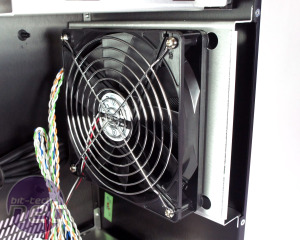
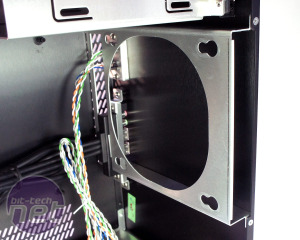
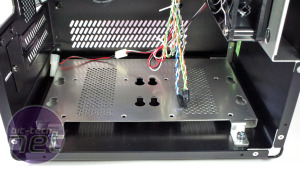
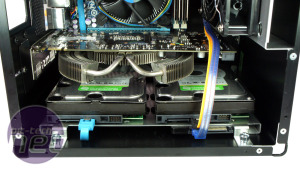
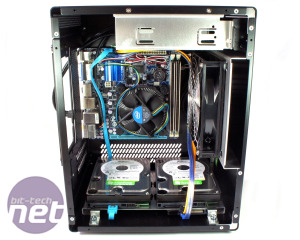
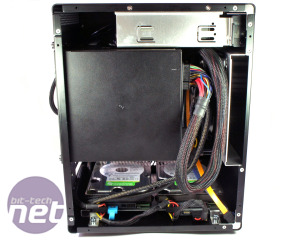







Want to comment? Please log in.